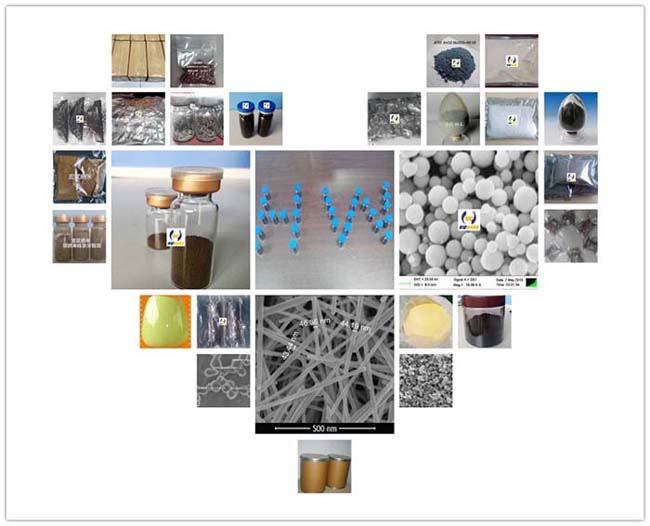Nanotechnology has become a trend, has a great help in our basic necessities of life including Buildings, clothing, food, transportation, medical care, etc. Nanomaterials with dimensions below around 100 nm exhibit unique physical and chemical properties drastically different from their bulk counterparts. The intricate relationship between nanostructure and functionality has opened up a whole new area of research where scientists world-wide aim at exploring, understanding and exploiting the potential of nanomaterials.
1. Sterile tableware and aseptic packaging with nanometer materials makes food more security.
nanomaterial representative: silver nanoparticle, silver nanowire, tio2 nano, etc.
2. That some nanopowders have strong adsorption ability, can make the waste water thoroughly become clear water and reach drinking standard.
nanomaterial representative: Iron nanoparticles, fe3o4 nano, Tio2 nano,etc.
3. Adding nanoparticles to the ceramic can make the material strength and toughness be greatly increased, which is expected to become the ideal material of cars, ships and other engine parts.
nanomaterial representative: silicon carbide nanoparticle, TIC nanoparticles, zro2 nano
4. the micro drug delivery device with nanotechnology can carry a certain dose of the drug in the body, can take the initiative to search for attacking cancer cells or repair damaged tissue.
nanomaterial representative: diamond nanoparticles,iron nanoparticles
5. Adding a small amount of nanoparticles can eliminate electrostatic phenomena of chemical fabric.
nanomaterial representative: ATO nano, TiO2 nano, ZnO nano, carbon nanotube, and metal nanoparticles,etc.
6. Building materials containing nanoparticles and solar thermal reflective material can absorb ultraviolet ray.
nanomaterial representative:TiO2 nano, ZnO nano, WO3 nano, carbon nanotube, etc.
7. Most of us once broke mobile phone or tablet screen.This is a very troublesome thing, we also need to find a place to repair, and pay big money to replace a new screen. Scientists have researched a material that is made of silver nanowires and graphene, which make touch screen be non-friable and flexible, what’s more, it is cheaper.
8. Cosmetics use. platinum nanoparticles, gold nanoparticles, tio2 nano, Zno nano, sio2 nano,etc.
9. More application.
Hongwu International Group Ltd is a Nanotechnology Company manufacturing nanoparticles and nanopowders, developing new nanomaterial based applications for the industry and supplying almost all kinds of nano-micro sized powders and more from worldwide-known companies. Our company provides our customers:
Carbon Nanotubes and Graphene Nanomaterials (almost all kinds are available)
High Quality Nanoparticles and Nanopowders (Elements, Alloys, Metal and Non-Metal Oxides, Compounds)
High Quality Microparticles and Micron Sized Powders (Elements, Alloys, Metal and Non-Metal Oxides, Compounds)
Nanowires
If you are looking for related products that are not in our product list yet, our experienced and dedicated team is ready for help. Do not hesitate to contact us at hwnano@xuzhounano.com. thank you.
Related reading:silver nanoparticles antimicrobial silver nanoparticles applications

